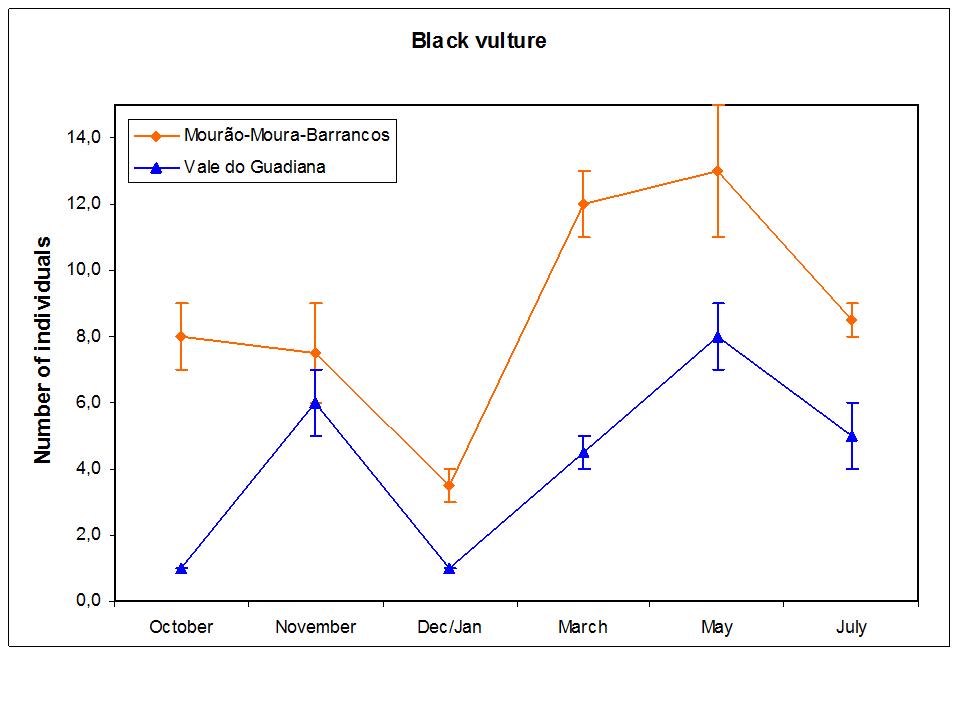Summary of the first annual cycle of scavenger bird counts
During the last year we performed scavenger bird counts on the Mourão-Moura-Barrancos and Vale do Guadiana SPAs. These counts aim to establish a baseline as to the status of the black vulture Aegypius monachus as well as other scavengers, prior to the implementation of conservation actions, in order to allow the future monitoring of their impact on the populations of these birds within the study area.
A total of 6 counts took place, three outside the black vulture breeding period (NBP), in October, November and December, and three during the breeding period (BP), in March, May and July.
We observed a higher abundance of black vultures during the breeding period (average NBP: 9±2,6 vs. average BP: 17±2,2), with a maximum of 21 individuals in May. This difference is likely related to the fact that these birds have larger foraging areas during the breeding season, and thus individuals from the Spanish breeding colonies are more likely to visit Portugal in this period. The number of black vultures was always higher in the Mourão-Moura-Barrancos SPA.
Over the 6 counts we detected 20 raptor species, representing 83% of the raptors usually found in Portugal. During the Autumn counts the most abundant species were the gryphon vulture Gyps fulvus (average: 409±81,4 individuals), the red kite Milvus milvus (average: 27±12,9 inds.), the common buzzard Buteo buteo (average: 20±3,7 inds.) and the common kestrel Falco tinnunculus (average: 13±2,8 inds.). During the Spring and Summer counts the most abundant species were again the gryphon vulture (average: 369±59,8 inds.), the black kite Milvus migrans (average: 19±5,2 inds.), the common buzzard (average: 15±2,6 inds.), the common kestrel (average: 13±2,7 inds.) and the short-toed eagle Circaetus gallicus (average: 12±1,9 inds.).
During the counts we detected several species of high conservation concern in Portugal, namely large eagles like the Bonelli’s eagle Aquila fasciata, the golden eagle Aquila chrysaetos and the Iberian imperial eagle Aquila adalbertii, as well as the Montagu’s harrier Circus pygargus.
This work was only possible thanks to the help of the many volunteers who have collaborated with LIFE Habitat Lince Abutre Project. Over the 6 counts we had the help of 21 volunteers from different areas of Portugal and Spain. The scavenger bird counts will continue in the coming years, as means to monitor future changes in the abundance of black vultures and other species within the study area. New volunteers are always welcome, so if you are interested in being a part of these counts please contact the project technician Pedro Lourenço through the e-mail plourenco@ceai.pt
